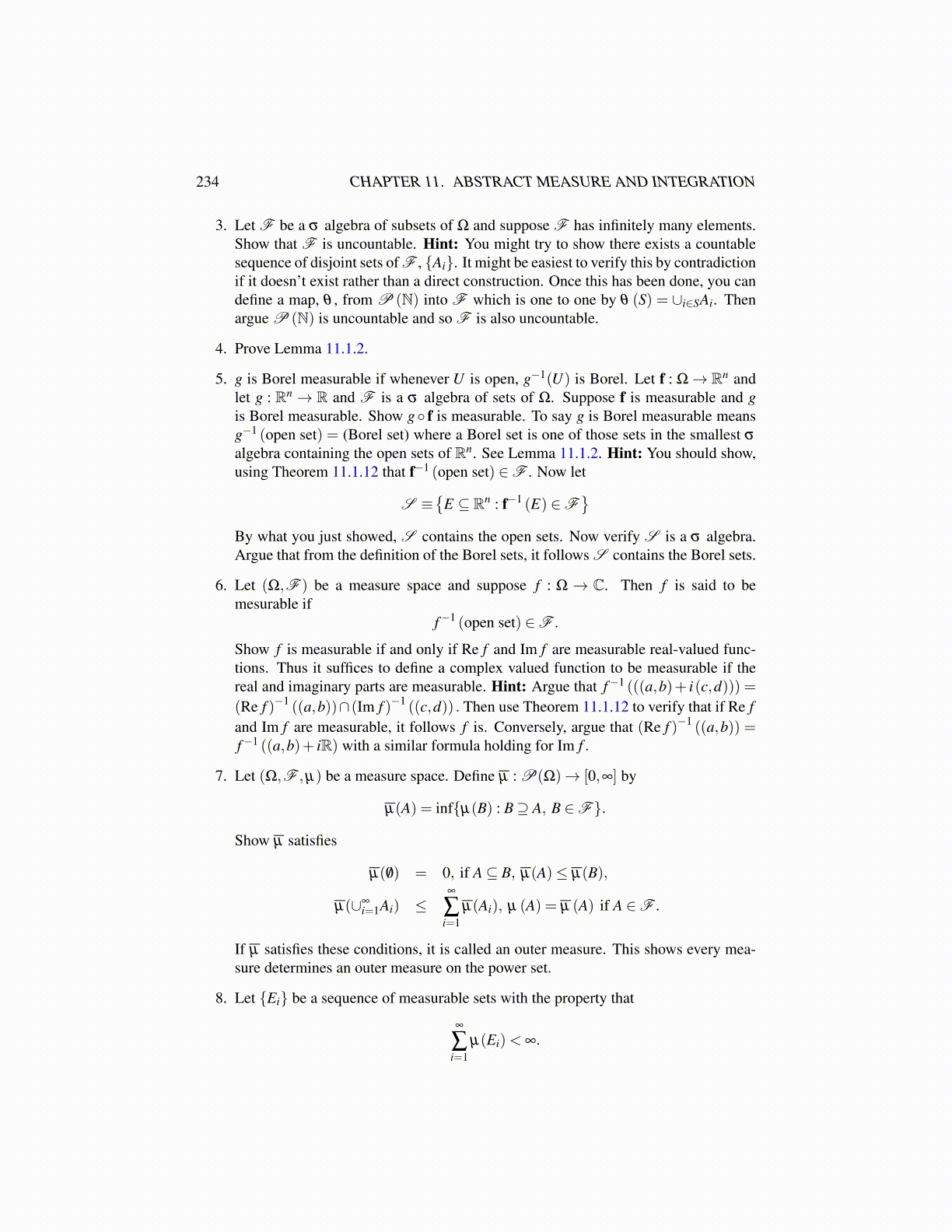
234 CHAPTER 11. ABSTRACT MEASURE AND INTEGRATION
3. Let F be a σ algebra of subsets of Ω and suppose F has infinitely many elements.Show that F is uncountable. Hint: You might try to show there exists a countablesequence of disjoint sets of F , {Ai}. It might be easiest to verify this by contradictionif it doesn’t exist rather than a direct construction. Once this has been done, you candefine a map, θ , from P (N) into F which is one to one by θ (S) = ∪i∈SAi. Thenargue P (N) is uncountable and so F is also uncountable.
4. Prove Lemma 11.1.2.
5. g is Borel measurable if whenever U is open, g−1(U) is Borel. Let f : Ω→ Rn andlet g : Rn → R and F is a σ algebra of sets of Ω. Suppose f is measurable and gis Borel measurable. Show g◦ f is measurable. To say g is Borel measurable meansg−1 (open set) = (Borel set) where a Borel set is one of those sets in the smallest σ
algebra containing the open sets of Rn. See Lemma 11.1.2. Hint: You should show,using Theorem 11.1.12 that f−1 (open set) ∈F . Now let
S ≡{
E ⊆ Rn : f−1 (E) ∈F}
By what you just showed, S contains the open sets. Now verify S is a σ algebra.Argue that from the definition of the Borel sets, it follows S contains the Borel sets.
6. Let (Ω,F ) be a measure space and suppose f : Ω → C. Then f is said to bemesurable if
f−1 (open set) ∈F .
Show f is measurable if and only if Re f and Im f are measurable real-valued func-tions. Thus it suffices to define a complex valued function to be measurable if thereal and imaginary parts are measurable. Hint: Argue that f−1 (((a,b)+ i(c,d))) =(Re f )−1 ((a,b))∩ (Im f )−1 ((c,d)) . Then use Theorem 11.1.12 to verify that if Re fand Im f are measurable, it follows f is. Conversely, argue that (Re f )−1 ((a,b)) =f−1 ((a,b)+ iR) with a similar formula holding for Im f .
7. Let (Ω,F ,µ) be a measure space. Define µ : P(Ω)→ [0,∞] by
µ(A) = inf{µ(B) : B⊇ A, B ∈F}.
Show µ satisfies
µ( /0) = 0, if A⊆ B, µ(A)≤ µ(B),
µ(∪∞i=1Ai) ≤
∞
∑i=1
µ(Ai), µ (A) = µ (A) if A ∈F .
If µ satisfies these conditions, it is called an outer measure. This shows every mea-sure determines an outer measure on the power set.
8. Let {Ei} be a sequence of measurable sets with the property that
∞
∑i=1
µ(Ei)< ∞.